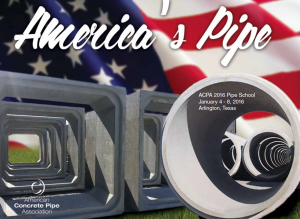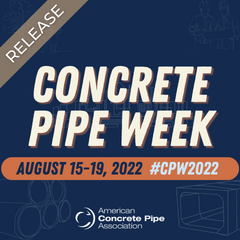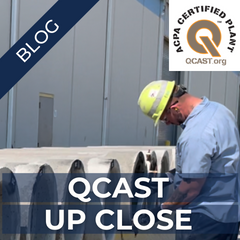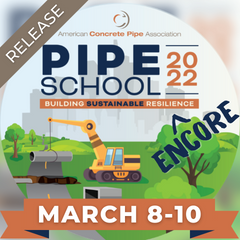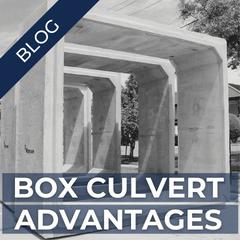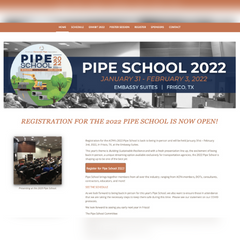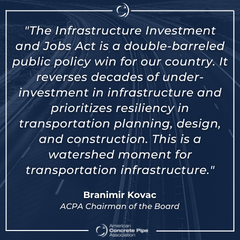When a 114-year-old culvert collapsed below Washington Street near downtown Waukegan, Illinois, the result was a 45-foot deep sinkhole that required emergency repairs. The situation deteriorated after a rainstorm. Immediate repairs were essential to avoid rupturing a sanitary line that could end up flowing into Lake Michigan.
Washington Street is a four-lane arterial street with sidewalks on each side. Inside the sinkhole, 45 feet below roadway grade, lay a 10-foot-diameter, stone pipe arch. Constructed in 1904, the 180-foot-long arch carries the Waukegan River underground. When the interior of the arch was inspected, it was discovered that a portion of the arch wall had collapsed, causing the sinkhole.
It was determined that a 10-foot-diameter reinforced concrete pipe would be the best repair from a combined hydraulic, constructability and availability perspective. Reinforced concrete pipe would provide the strength, resilience and dependability needed for the project. Plus, it was quickly available to the contractor, Campanailla & Sons, and could be delivered on short notice so the road could return to service as soon as possible.
Design and Installation
For this job, the concrete pipe used 10-foot diameter cages that were built in-house in a day. The manufacturer could provide a fast turnaround, which was necessary for this emergency repair. Production of the pipe started within 3 to 4 days of the order. It was considered a specialty design because the project involved 33 feet of cover on top of the 10-foot-diameter pipe. The pipe measured 7 feet, 6 inches long with a 12-inch wall. Stirrups were placed in the crown and invert to accommodate the shear forces from the 33 feet of cover. Reinforced concrete pipe is a structure that allows the designer to add additional strength, which is sometimes required.
The contractor followed ACPA recommendations for installing large pipes. A dead man restraint was placed in the initial installation to pull the pipe joint into place through mechanical force (pipe puller). The pipe puller remains in place, and each additional joint of pipe is winched home. When the pipe puller cable is not long enough, the pipe puller is reset further into the pipe. This type of installation leads to much straighter, uniform joints. Alternate methods of pushing the pipe into place with construction equipment are against ACPA recommendations, as it can damage the pipe and would typically lead to poor joints and alignment of the culvert.
Meeting the Challenges
In the span of two months, the 114-year-old arch was cut open and then replaced with the 10-foot diameter precast concrete pipe. The weather was always a factor since a rainstorm could delay a quick repair, and more damage could incur if the arch continued to deteriorate.
The replacement of the half-collapsed stone arch culvert required an open excavation. It was challenging to maintain stability of the steep slopes during rain. To add to this, an unrelated water-main failure at a nearby retirement home created some additional erosion to the slopes of the excavation.
One of the challenges of the project was maintaining an AT&T fiberoptic line that had to be structurally reinforced so it could be supported in place by two cranes (a 200-ton and 165-ton) during final excavation and installation of the concrete pipe.
During the installation, an invert of the new culvert was set 6 inches below the stream bed elevation to allow the bottom of the culvert to fill in with sediment, imitating a natural streambed. This method provides a better habitat for fish and other stream inhabitants.
Despite the severity of the culvert collapse, precast reinforced concrete pipe allowed for a quick, long-lasting structural repair.The community was able to quickly resume use of the road, and the Department of Public Works was relieved that the nearby sanitary line was not ruptured.
Location: Waukegan, IL
Date Completed: December 10, 2018
Project Owner: City of Waukegan, IL
Contractor: Campanailla & Sons
Precast Supplier: Oldcastle Infrastructure
Engineer: Ciorba Group Ltd


